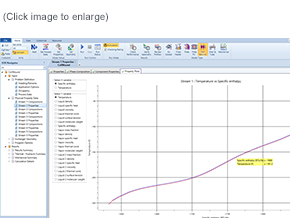.jpg)
Gain insights, optimize performance.
Aspen Coil Wound Exchanger uses rigorously tested correlations for calculation of heat transfer coefficients and pressure drops. By considering the multi-component, mass transfer effects, details of temperature and pressure drop variations inside the heat exchanger can be calculated.
Improve large, complex LNG facilities.
Factors within LNG plants, such as ambient temperatures, the performance of units and recycles, can impact heat exchangers, especially with sensitive temperature approaches. Model the full process, including complex cryogenic processes with Aspen Coil Wound Exchanger - integrated with Aspen HYSYS®.

Support all physical properties.
One advantage of performing the design, simulation and rating of coil wound heat exchangers using the Aspen Exchanger Design & Rating (Aspen EDR) family is that the properties can be transferred from steady-state simulators from AspenTech, or retrieved from Aspen Properties®, Aspen HYSYS Thermodynamics COM interface or the heritage Aspen B-JAC™ database. More than 24,000 components and 30 vapor liquid equilibrium methods are available in Aspen EDR.

